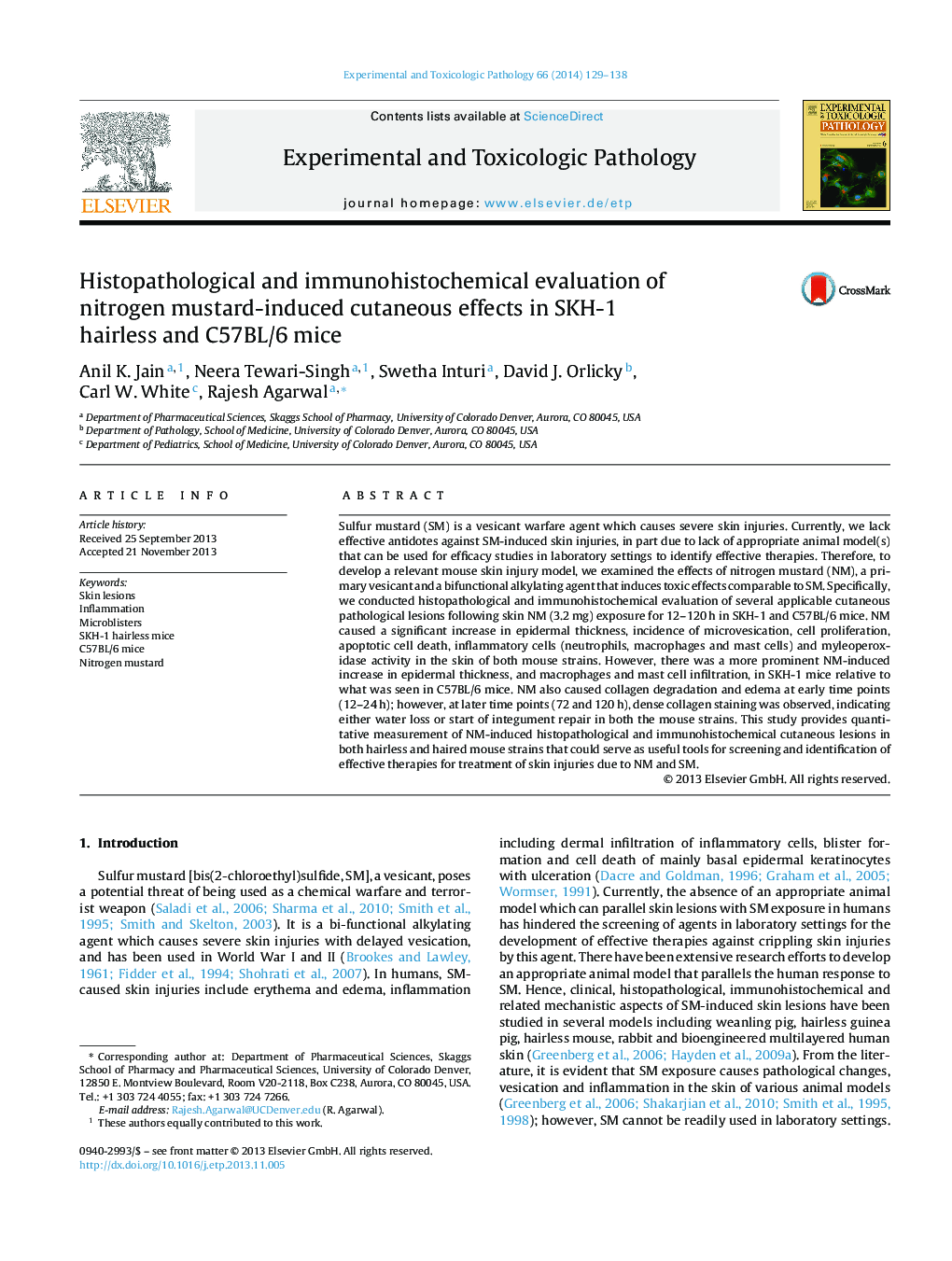| Article ID | Journal | Published Year | Pages | File Type |
|---|---|---|---|---|
| 5817159 | Experimental and Toxicologic Pathology | 2014 | 10 Pages |
Abstract
Sulfur mustard (SM) is a vesicant warfare agent which causes severe skin injuries. Currently, we lack effective antidotes against SM-induced skin injuries, in part due to lack of appropriate animal model(s) that can be used for efficacy studies in laboratory settings to identify effective therapies. Therefore, to develop a relevant mouse skin injury model, we examined the effects of nitrogen mustard (NM), a primary vesicant and a bifunctional alkylating agent that induces toxic effects comparable to SM. Specifically, we conducted histopathological and immunohistochemical evaluation of several applicable cutaneous pathological lesions following skin NM (3.2Â mg) exposure for 12-120Â h in SKH-1 and C57BL/6 mice. NM caused a significant increase in epidermal thickness, incidence of microvesication, cell proliferation, apoptotic cell death, inflammatory cells (neutrophils, macrophages and mast cells) and myleoperoxidase activity in the skin of both mouse strains. However, there was a more prominent NM-induced increase in epidermal thickness, and macrophages and mast cell infiltration, in SKH-1 mice relative to what was seen in C57BL/6 mice. NM also caused collagen degradation and edema at early time points (12-24Â h); however, at later time points (72 and 120Â h), dense collagen staining was observed, indicating either water loss or start of integument repair in both the mouse strains. This study provides quantitative measurement of NM-induced histopathological and immunohistochemical cutaneous lesions in both hairless and haired mouse strains that could serve as useful tools for screening and identification of effective therapies for treatment of skin injuries due to NM and SM.
Related Topics
Life Sciences
Agricultural and Biological Sciences
Animal Science and Zoology
Authors
Anil K. Jain, Neera Tewari-Singh, Swetha Inturi, David J. Orlicky, Carl W. White, Rajesh Agarwal,
